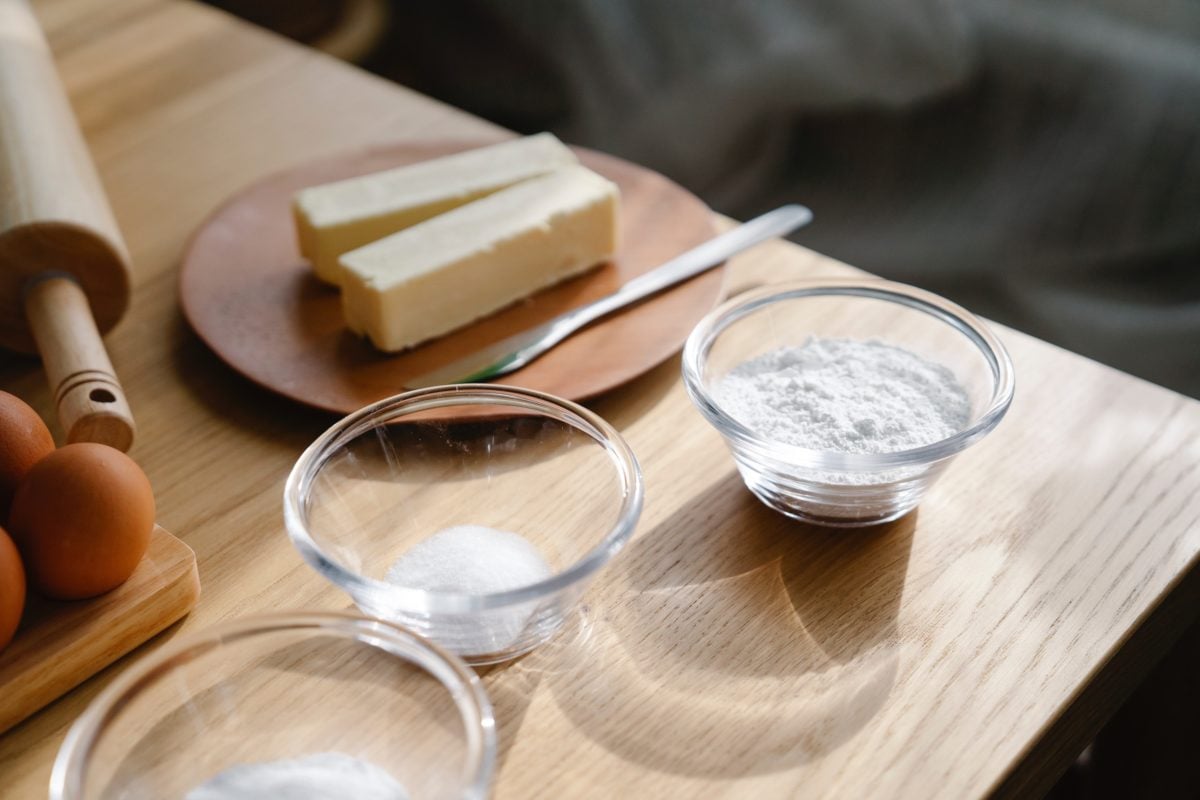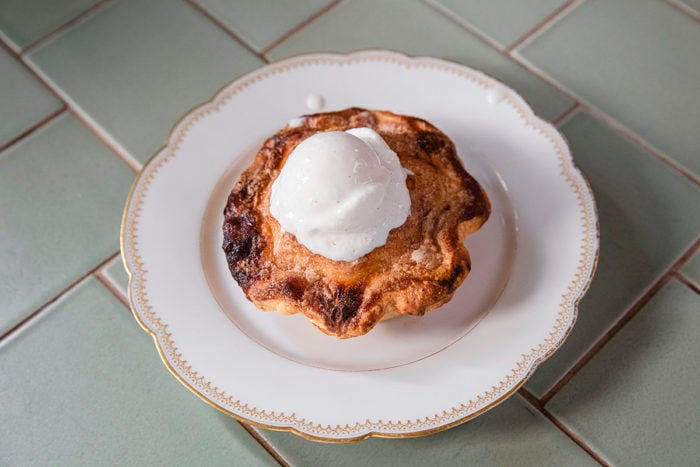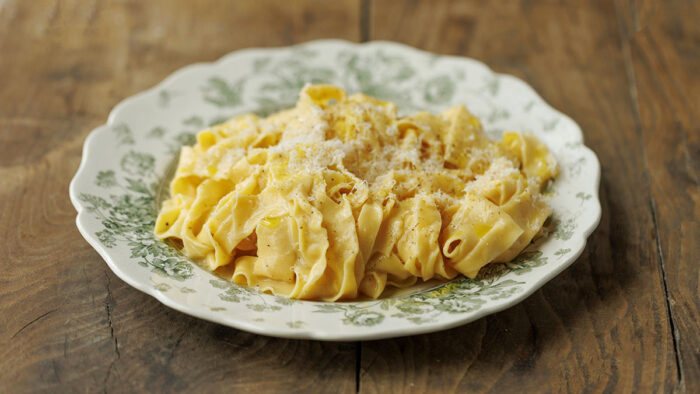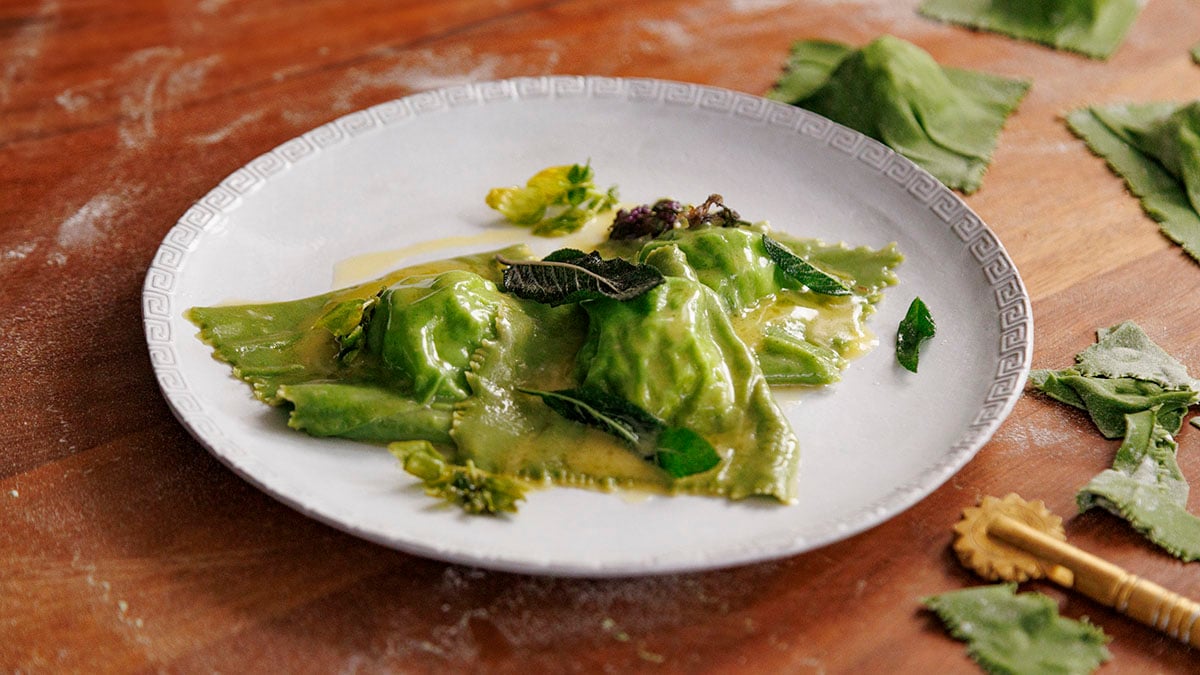
Is YesChef right for me?
Take this quiz to find out.
What’s the Difference Between Baking Soda vs. Baking Powder?
Written by the YesChef staff
Share on


If you ask most bakers about their essential ingredients, baking soda and baking powder will likely make the list. Whether you are a professional chef or you like to cook, these are two ingredients that you will likely be incorporating into your food.
But what is the difference between baking soda and baking powder? Let’s find out.
Get Access to an Ever-Growing Library of Classes
Every Subscription includes:
- Unlimited Streaming of all Classes
- Watch on your phone, tablet or laptop
- Story-driven Classes, Practical Lessons
- Recipes with Step-by-Step Guidance
- 30-day Satisfaction Guarantee
- New Lessons added all the time
$9.99/mo
Billed annually

How Does Baking Soda Work?
Baking soda is an alkaline compound that reacts to the acidity of other ingredients to produce carbon dioxide. To activate it, you need to have both a liquid and an acid. Acidic ingredients you might have in your kitchen include lemon juice, yogurt, buttermilk, vinegar, brown sugar, and cream of tartar. When baking soda is activated, carbon dioxide is produced. That is what leads to baked goods rising and becoming light and fluffy.
One of the reasons you may end up with a dense pastry after baking is not using enough baking soda. The opposite isn’t true though; too much baking soda will not lead to an extremely fluffy pastry. Too much baking soda can result in a bitter taste.
Baking soda is sometimes referred to as sodium bicarbonate.
One of the reasons you may end up with a dense pastry after baking is not using enough baking soda. The opposite isn’t true though; too much baking soda will not lead to an extremely fluffy pastry. Too much baking soda can result in a bitter taste.
Baking soda is sometimes referred to as sodium bicarbonate.
How Does Baking Powder Work?
Unlike baking soda, baking powder is already combined with an acid. All you need to do to cause a reaction is add liquid. The most commonly used baking powder is double-action baking powder. What is double-acting baking powder? It means that the baking powder allows the dish to rise on two occasions.
In double-acting baking powder, the first rise occurs when baking powder gets wet at room temperature. The first reaction occurs when the powder is combined with a liquid at room temperature, and the second happens when the powder is combined with heat, like when you put the dish in the oven. Most baking powder on the market is double-acting, and will say so on the label.
Single-action baking powder is most often used by professional chefs, and it only has a reaction when heated. Baking powder is used in recipes that do not call for the addition of acidic ingredients. You can use baking powder for quick breads, baked good recipes, and other baking recipes. For example, in a simple biscuit recipe that only calls for baking powder, eggs, milk, and flour, the baking powder reacts with the liquids and acts as the rising agent.
In double-acting baking powder, the first rise occurs when baking powder gets wet at room temperature. The first reaction occurs when the powder is combined with a liquid at room temperature, and the second happens when the powder is combined with heat, like when you put the dish in the oven. Most baking powder on the market is double-acting, and will say so on the label.
Single-action baking powder is most often used by professional chefs, and it only has a reaction when heated. Baking powder is used in recipes that do not call for the addition of acidic ingredients. You can use baking powder for quick breads, baked good recipes, and other baking recipes. For example, in a simple biscuit recipe that only calls for baking powder, eggs, milk, and flour, the baking powder reacts with the liquids and acts as the rising agent.
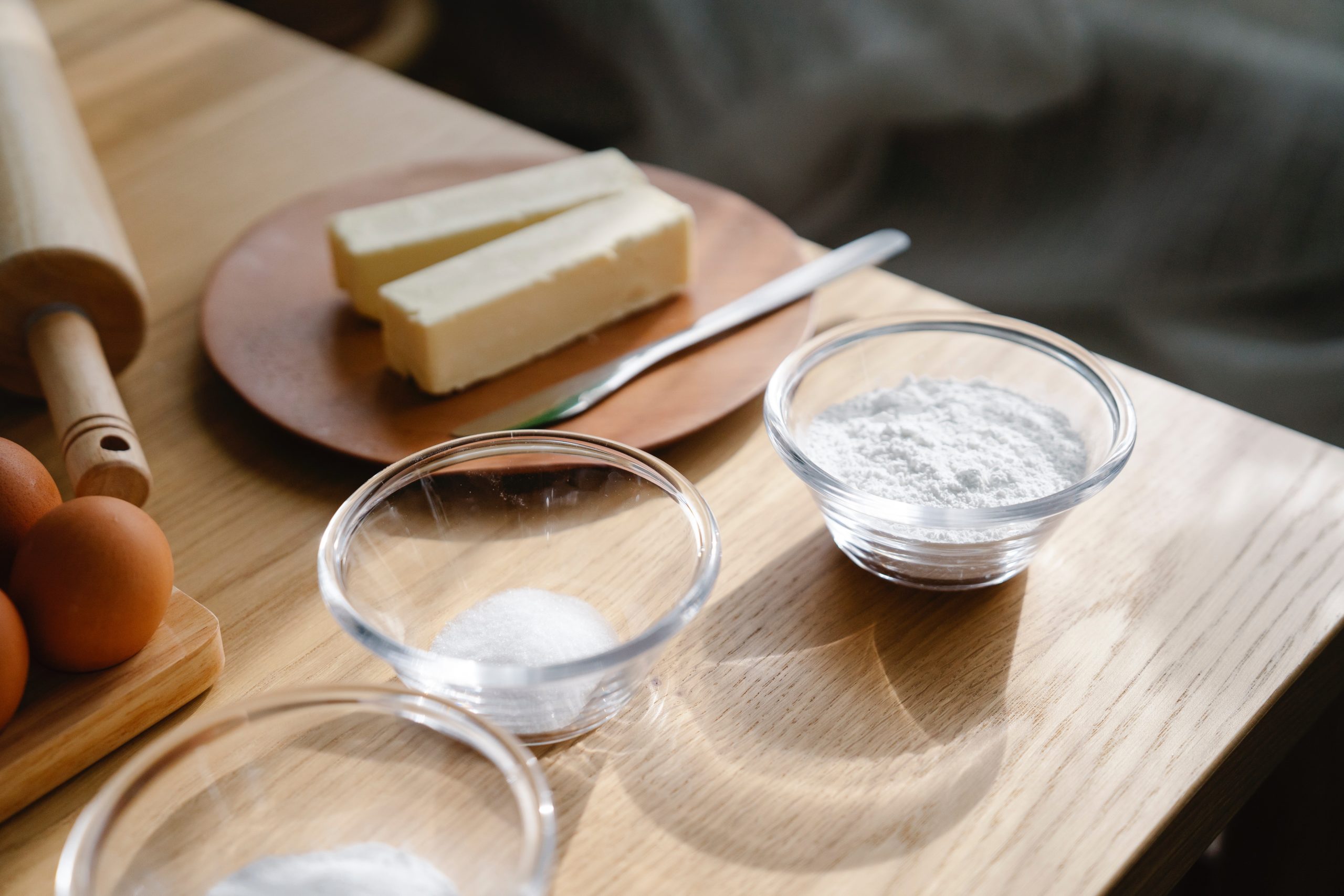
Can You Substitute Baking Powder for Baking Soda?
The short answer is – it depends. If the recipe calls for baking soda, a good rule of thumb is that you can substitute it with three times the amount of baking powder. (For example, if you need a quarter teaspoon of baking soda, use three-quarters of a teaspoon of baking powder.)
Be mindful that this formula isn’t perfect: Too much baking powder can cause a dish to be acidic and also salty, and too little baking powder will make it dense.
Because baking powder needs a liquid to cause a reaction, a simple swap of baking soda for baking powder will not achieve the desired result. However, a mixture of baking soda and an acid could serve as an appropriate substitute.
For each teaspoon of baking powder in the recipe, you can substitute:
When to use the two together? In some instances, a recipe can call for using both baking soda and baking powder.
This might be the case when the recipe includes acidic ingredients like lemon juice or buttermilk for flavor. Using too much baking soda would neutralize the flavor, but using both baking soda and baking powder will leave enough acid to maintain the tangy flavor.
The addition of the two can contribute to a better browning of baked goods. Baked goods brown better in highly alkaline environments. To create a more alkaline environment, baking soda can be added to recipes with baking powder.
Be mindful that this formula isn’t perfect: Too much baking powder can cause a dish to be acidic and also salty, and too little baking powder will make it dense.
Because baking powder needs a liquid to cause a reaction, a simple swap of baking soda for baking powder will not achieve the desired result. However, a mixture of baking soda and an acid could serve as an appropriate substitute.
For each teaspoon of baking powder in the recipe, you can substitute:
- ½ cup of buttermilk or plain yogurt and ¼ teaspoon of baking soda;
- ¼ teaspoon of baking soda and ½ teaspoon of vinegar; or
- ½ teaspoon of lemon juice or citrus juice and ¼ teaspoon of baking soda.
When to use the two together? In some instances, a recipe can call for using both baking soda and baking powder.
This might be the case when the recipe includes acidic ingredients like lemon juice or buttermilk for flavor. Using too much baking soda would neutralize the flavor, but using both baking soda and baking powder will leave enough acid to maintain the tangy flavor.
The addition of the two can contribute to a better browning of baked goods. Baked goods brown better in highly alkaline environments. To create a more alkaline environment, baking soda can be added to recipes with baking powder.
Can You Substitute Baking Powder for Baking Soda?
If you don’t have baking soda on hand, you can substitute it with baking powder – just use three times as much baking powder as baking soda in the recipe. For example, if a recipe calls for one teaspoon of baking soda, use three teaspoons of baking powder.
Substitutes for Baking Powder
If you do not have baking powder on hand, you can use whipped egg whites. Whip the egg whites using a hand mixer or electric mixer until they foam. Increase the speed on the mixer until soft peaks begin to form. Gently fold the egg whites into the batter.
Club soda can also work as a substitute for baking powder. You can use it to replace liquids like milk in the recipe but beware: This might water down a dish.
What Is the Shelf Life of Baking Soda and Baking Powder?
Both baking soda and baking powder lose their effectiveness over time. Unopened, baking powder will stay fresh for 18 months. Once opened, its shelf life will depend on how much moisture (humidity) it is exposed to, but it will typically last three to six months. Unopened baking soda will be effective for about two years. Once it’s opened, it lasts about six months.
Both baking powder and baking soda should be stored in a cool, dry place.
Both baking powder and baking soda should be stored in a cool, dry place.
Baking Soda Cleaning Hacks
There are many uses for baking soda outside of baking. Baking soda has been used as a household trick for many years, especially as a deodorizer. For example, sprinkling powder or a teaspoon of baking soda in your cat’s litter box or in the bottom of your trash can will reduce some unpleasant odors.
You can also keep baking soda in the fridge to help absorb odors; to do so, simply spread it evenly on the surface. Baking soda can also be used as a cleaning agent, like on countertops and sinks.
You can also keep baking soda in the fridge to help absorb odors; to do so, simply spread it evenly on the surface. Baking soda can also be used as a cleaning agent, like on countertops and sinks.
Dario's Story
Serves:
|
Hands-on:
|
Total:
Ingredients
Recipe


Nancy Silverton
James Beard Award-winning chef, best-selling cookbook author, and the restaurateur behind Michelin-starred Mozza, Nancy Silverton takes viewers on a journey from her home in Panicale, Italy, to her home in Los Angeles. Viewers learn a range of Nancy’s renowned dishes, including her signature Caesar Salad, Chi Spacca Pepper Steak, 10+ vegetarian dishes, Mom’s Apple Pie, and more.
More Articles
Jamaican Patties
September 15, 2022
Pasta Bianco
September 19, 2023
The best apple pie recipe
December 28, 2021
How to bake the perfect potato
May 11, 2023
Green Ravioli
September 18, 2023
How Many Tablespoons in a Cup – A List of Measurement Conversions
December 28, 2021
